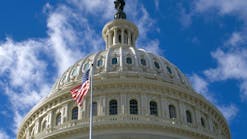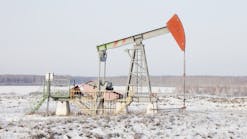Moniz wants closer look at methane emissions across gas system
US Energy Secretary Ernest G. Moniz called for more scrutiny of methane emissions from natural gas operations beyond exploration and production.
“We certainly need more data not just from production wells, but also from transmission and distribution systems,” he said in response to a question after a Feb. 19 speech at the National Press Club.
The administration already has a very active methane emissions study group that includes the Domestic Policy Council, the US Department of the Interior, and US Environmental Protection Agency, Moniz said.
“There also are private efforts, by groups such as the Environmental Defense Fund and a blue-green alliance of organized labor and environmental organizations, that are doing important work,” he said.
“Certainly, the technologies for capturing methane emissions at the wellhead exist and are being used,” Moniz said. “Green technologies have been deployed in North Dakota to reduce the amount of gas associated with oil production that is being flared there. There’s a lot of progress, and I hope we’ll see reduced emissions over the next few years.”
Estimates questioned
He noted an article in the Feb. 14 Science magazine said total methane emissions are somewhat higher than EPA’s estimates, but added that hydraulic fracturing does not appear to be a dominant contributor.
The article, “Methane Leaks from North American Natural Gas Systems” by Adam R. Brandt, an assistant professor at Stanford University’s Energy Resources Engineering Department, and 16 other scientists, said EPA’s estimates may be low because it uses methods developed before the US unconventional oil and gas production boom.
The article called for a combination of direct measurements and new estimates using methods that reflect current technologies and practices to pinpoint where leaks occur.
“Many independent experiments suggest that a small number of ‘super-emitters’ could be responsible for a large fraction of leakage,” the article added.
Climate change focus
Moniz reiterated that the Obama administration is pursuing an all-of-the-above energy policy, but added that its main goal is reducing carbon and other emissions to address problems associated with global climate change.
“The patterns are alarming, and they have been statistically anticipated,” he said. “We see warming amplifying storms’ effects, such as Superstorm Sandy, which disrupted power supplies for East Coast refineries and pipelines. In the midst of a heavy draught, many companies which use hydraulic fracturing were denied access to water.”
The first national quadrennial energy review, which will be prepared this year, will focus on energy infrastructure, storage, and transmission, Moniz said.
“We’ve seen two major areas in the past few months: the electricity grid, which would be more flexible while addressing extreme weather and cybersecurity risks, and fuels distribution, where there have been problems with propane and with heating fuels in the Northeast,” he said.
Contact Nick Snow at [email protected]

Nick Snow
NICK SNOW covered oil and gas in Washington for more than 30 years. He worked in several capacities for The Oil Daily and was founding editor of Petroleum Finance Week before joining OGJ as its Washington correspondent in September 2005 and becoming its full-time Washington editor in October 2007. He retired from OGJ in January 2020.


